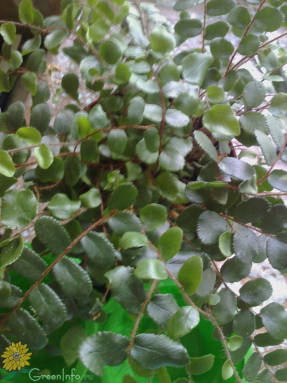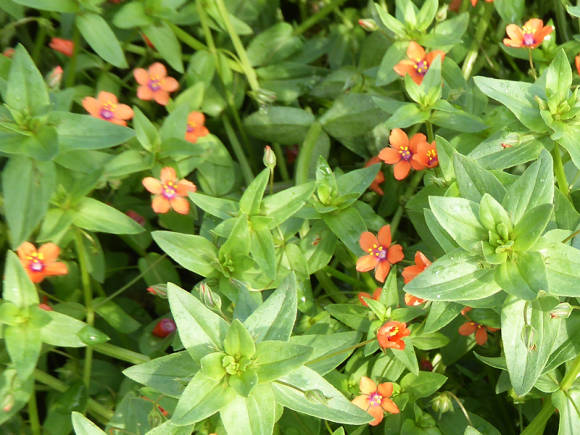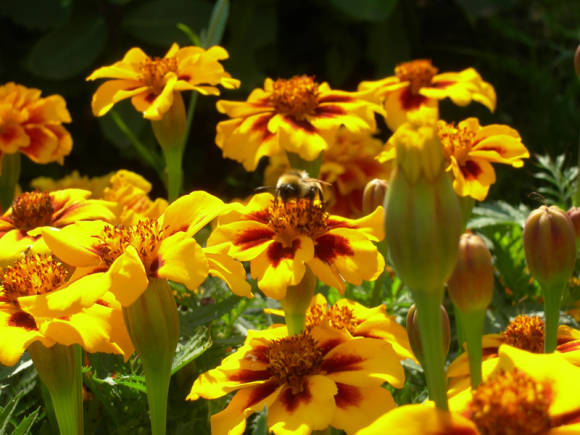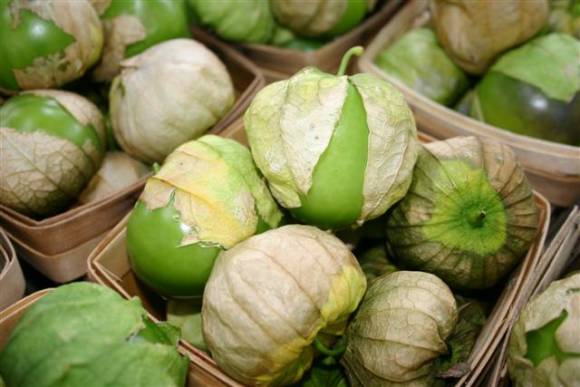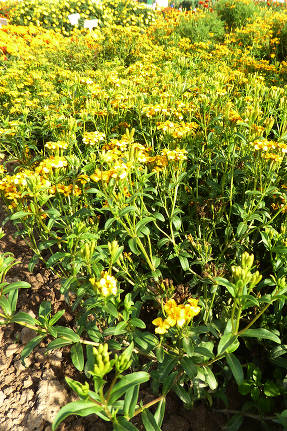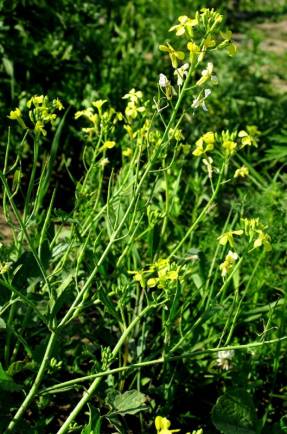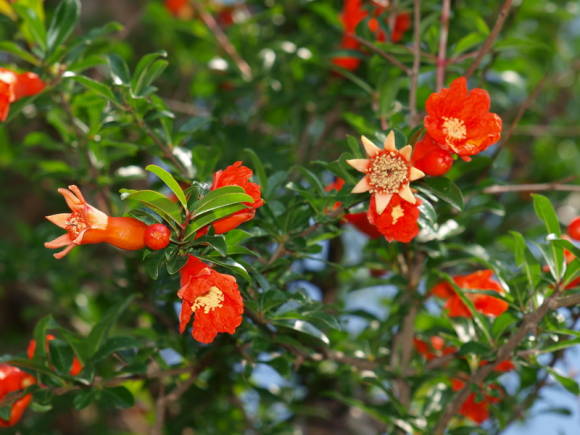American naturalist Constantin Samuel Rafinesk-Schmalz (1783-1840), despite his great contribution to botany and other sciences, was known in the scientific community "out of this world." Studying the flora of North America, he described about 250 species of plants and animals, and even proposed his own theory of evolution. Often he gave the plants intricate, meaningless names. So this family also got such an inexplicable, rhythmic, as a drum roll, the name - ratibida.

The genus ratibid (Ratibida) of the Asteraceae (Compositae) family is small in composition, includes 7 species of exclusively North American plants. Of these, the 3 most attractive species are cultivated:
- Ratibidida columnar, or, literally translated from Latin - columnar (Ratibida columnifera)
- Ratibida pinnate (Ratibida pinnata)
- Ratibida Mexican (Ratibida mexicana)
The genus is also known as Lepachys - from Greek roots lepis - scales and pachys - thick, which indicates the peculiarity of the structure of the leaves of the envelope, which have thickenings in the upper part, covered with resinous glands.
These are plants of the American prairie, close to the genera Echinacea and Rudbeckia. The similarity with rudbeckia in pinnate ratibid is especially noticeable - its yellow pointed tongues are lowered around a convex dark brown center. But there are also obvious differences: the very wrapper of the inflorescence, as well as a very convex disc, which, as it blooms, strongly stretches into a columnar and long one, in some species up to 5 cm.Together with ligulate flowers of yellow or brown color, the inflorescence resembles a sombrero, hence the well-known the American name for this plant is Mexican hat, there are others - Long-headed coneflower, Thimbleflower.
Ratibid columnar, or columnar, or elongated (Ratibida columnifera) grows from Canada (Ontario) through the western United States to southern Mexico. The most common in the Great Plains region, but also found in the mountains up to an altitude of 2000 m above sea level. It is a plant of dry prairies and meadows, often on wastelands, roadsides and embankments of railways. Gravitates towards calcareous soils, but easily assimilated on others.
It has been cultivated in gardens since 1811, while remaining a little-known exotic.

It is a perennial plant with numerous rigid, strong, ribbed, branched and leafy stems up to 105 cm tall, forming a spreading bush. All parts of the plant are glandular hairy, rough. The lower leaves are petiolate, bluish-green, up to 15 cm long and 6 cm wide, openwork, pinnate or double-pinnate, with 3-14 narrow segments, which often only cover the veins. Expressive baskets with a diameter of 5-6 cm rise above the foliage. The ligulate flowers are female, obovate, up to 2.5 cm long, arranged in one row and bent towards the stem. They are silky and shiny, can have yellow, yellow-purple, maroon color, less often two-color - brown with yellow edging. The disc is convex, hemispherical, yellowish-greenish, 1-5 cm long and 0.7-1.2 cm wide, includes 200-400 tubular bisexual flowers, becomes high, cylindrical and becomes dark brown in color as it blooms. Forms a large number of small yellowish-brown achenes, hairy and slightly winged.
The flowers of the disc bloom from bottom to top within 1-2 weeks, the yellow rim of the stamens rises higher until it reaches the apex of the disc. Pollinated flowers turn from yellow-green to brown. And reed flowers - "petals" are preserved even after complete pollination. The flowering of the plant lasts up to 2 months.
In culture, the variety is most valued Ratibida columnifera var. pulcherrima - with purple-yellow (to almost purple) ligulate flowers.The typical yellow form in nature is practically not found in our country, although it is also very beautiful and harmonizes well in flower beds with a darker variety.
On sale you can find seeds of the columnar ratibide varieties called "Mexican Hat" and "Sombrero" - rarely exceeding 60 cm in height, with large baskets up to 8 cm in diameter, with chocolate-colored tongues with yellow edging.
Growing ratibide
Like any steppe plant, columnar ratibida is unpretentious, but only in good conditions does it bloom profusely and for a long time, showing the maximum of its decorative qualities.
She is thermophilic and photophilous, needs a sunny, warm place. Tolerates only small and short shading from taller neighboring perennials.
Prefers limed soils, the optimum acidity is 6.6-7.8. The place for ratibida is prepared in autumn, dolomite flour is added. In terms of texture, the soil should be loose and drained, with an admixture of sand. The plant does not tolerate heavy clay soils and clinging. It can grow on poor, but looks much more impressive on fertilized soils.
Ratibid almost does not need care, it easily tolerates drought without watering. However, to prolong flowering in the absence of rain, it should still be watered, maintaining a constant moderate humidity.
Winters well in the middle lane, does not need shelter.
It is resistant to diseases and pests, in rare cases it can be affected by powdery mildew or mushroom spots.
It is necessary to look after the ratibide - it easily suppresses neighboring plants. Therefore, when planting, you should maintain a distance and fight self-seeding. At the same time, it has to be protected from larger and more aggressive perennials.

Reproduction
Ratibida is columnar - a perennial plant, but already in the 3rd year its decorative effect decreases. In the spring, at the beginning of regrowth, division is possible. However, it rarely succeeds as the plant has a strong, thickened and branched taproot. Cutting is easy, but in practice it is rarely used.
In general, vegetative propagation for ratibid does not make sense, since it propagates well by seeds and self-seeds. Due to its ability to flower in the year of sowing, it is often grown in an annual crop. For this, the seeds are sown for seedlings very early, in February. But it is necessary to prepare them for sowing in advance. Cold stratification (optimally about + 5oC) for 4-9 weeks significantly increases germination.
Seeds are sown on the surface of the soil, not covering, but only pressing. Cover with foil and germinate in the light in a warm atmosphere at a temperature of + 25 ° C. They germinate for 14 to 20 days. Seedlings are dived in the phase of two true leaves, grown in good lighting (best of all in a greenhouse). They are planted with the end of frost in the open ground at a distance of 30-45 cm.
A seedless growing method is also possible. In this case, the seeds are sown before winter or in spring on snow or frozen ground (late March - early April). In this case, the seeds undergo natural stratification.
Ratibid bloom begins at the end of June and lasts until the first frost. If the summer is cool, columnar ratibide may not bloom in the first year. Therefore, it is best to conduct it in a two-year culture.
Ratibida forms a huge number of seeds and multiplies abundantly by self-seeding. To prevent the plant from weed, it is necessary to cut off the faded inflorescences before the seeds spill out.
If you want to collect your own seeds for spring sowing, be sure to take them from a few of your favorite specimens.
Usage
A single ratibide plant does not look as luxurious as a group, since the foliage is concentrated at the bottom, and the inflorescences are located on long pedicels. The brown color of the inflorescences is best in harmony with green, white, yellow. The green of the lawn will be a good background for her.And in mixborders, white and yellow yarrows, echinacea, rudbeckia, cereals will give a beautiful combination. A real American prairie garden will grow!
Good curbs are obtained from ratibid. In early summer, they consist of lace foliage, and later are covered with many baskets. But by the end of the season, they look too loose.
Low moisture requirements make this plant suitable for decorating slopes, gravel gardens and growing in containers.
Do you want a Mexican flower bed? Plant with ratibid such plants as bidense ferulele and marigolds, all of which come from the same country. A hot Mexican fiesta will rage in your garden all summer long!
It has long been noted that many drought-resistant plants are well preserved in a bouquet. Ratibida is no exception. If you cut it off until the middle of the inflorescence has darkened, it will stand in the water for 7-10 days.
The leaves of the ratibide have a scent, unlike the inflorescences, in which only when rubbed can you feel subtle anise notes. The American Indians have long consumed a tea drink made from the leaves and buds of the plant. Such tea not only tastes good, but also has analgesic and antipyretic effects, relieves stomach and headaches, fever.
